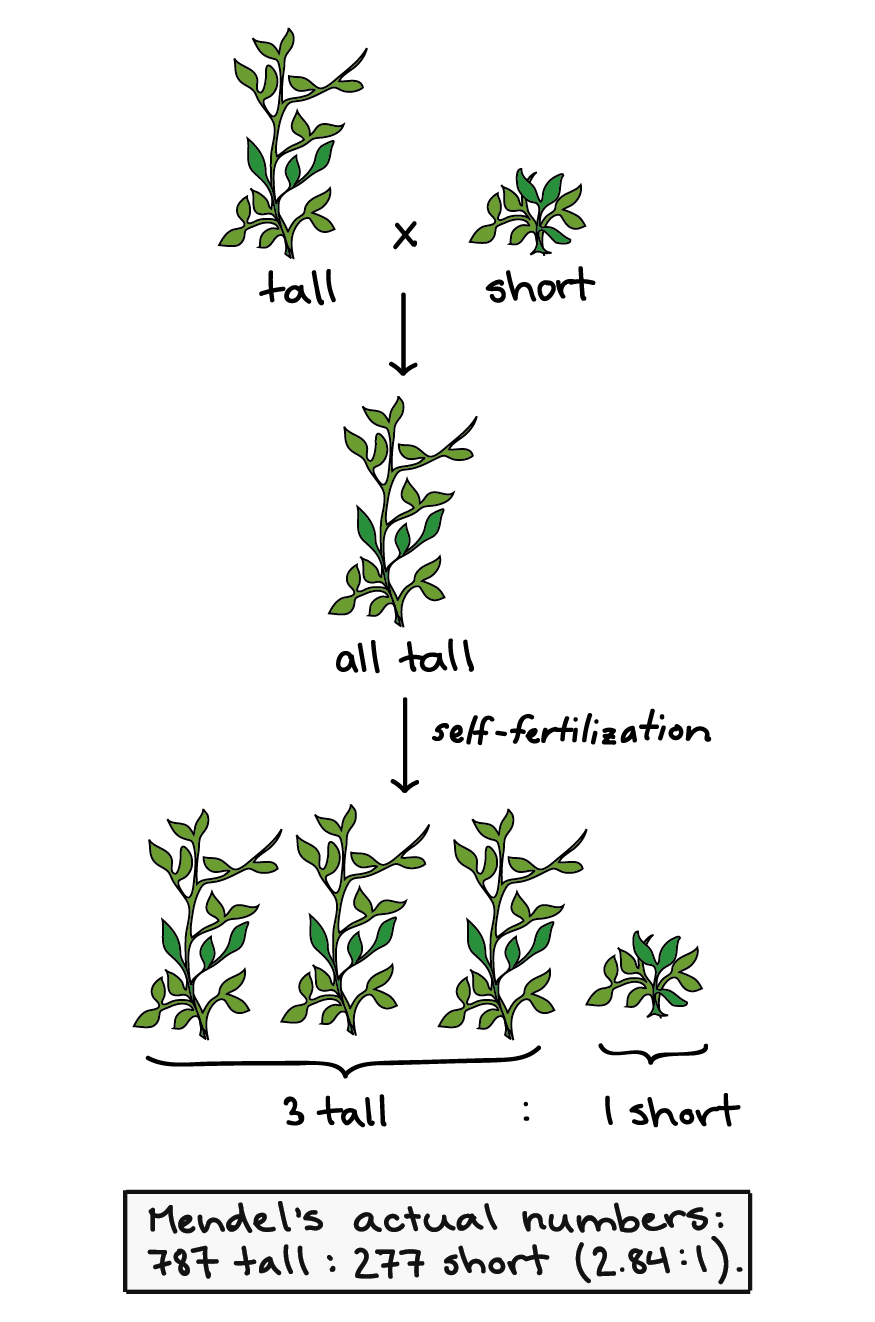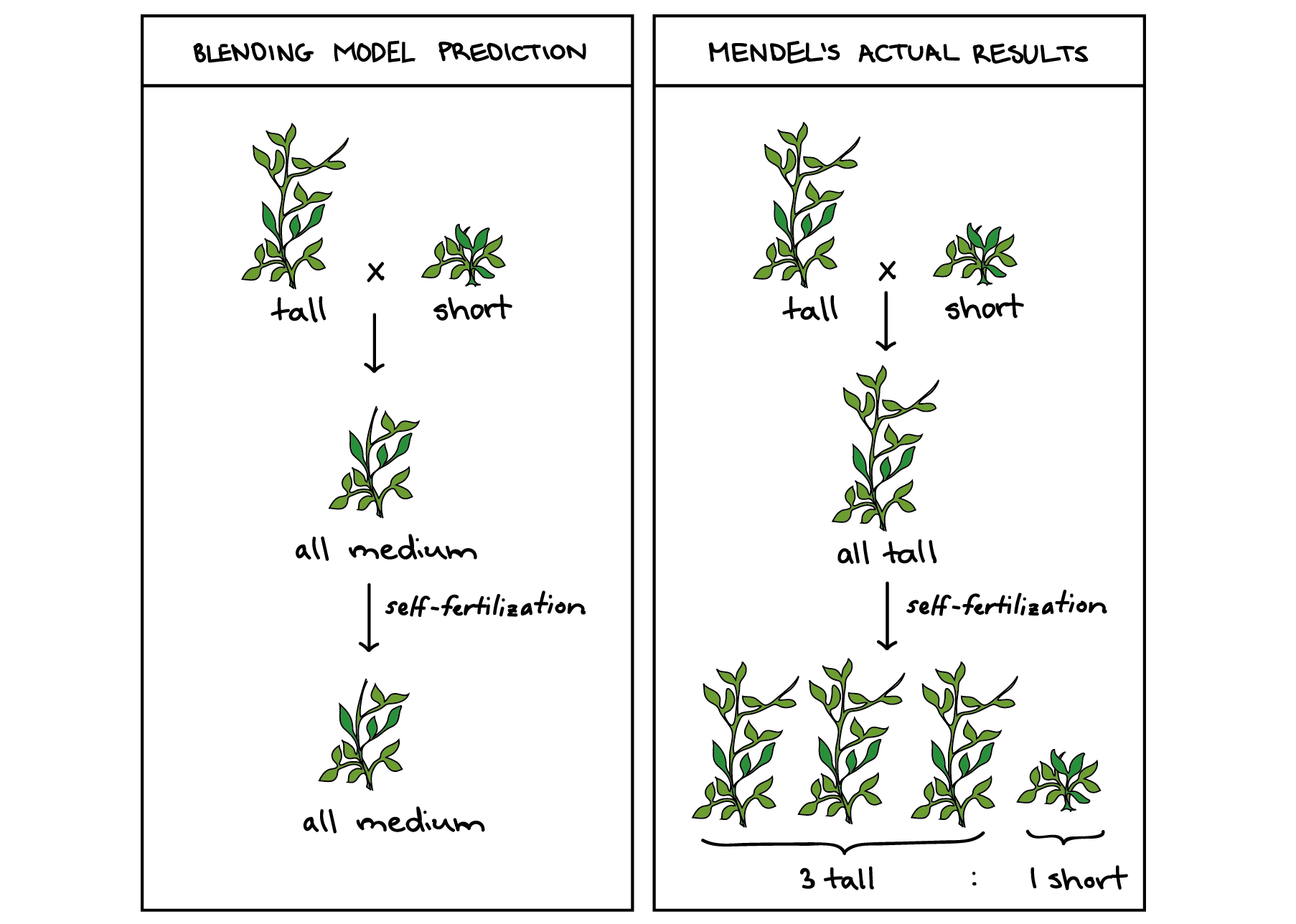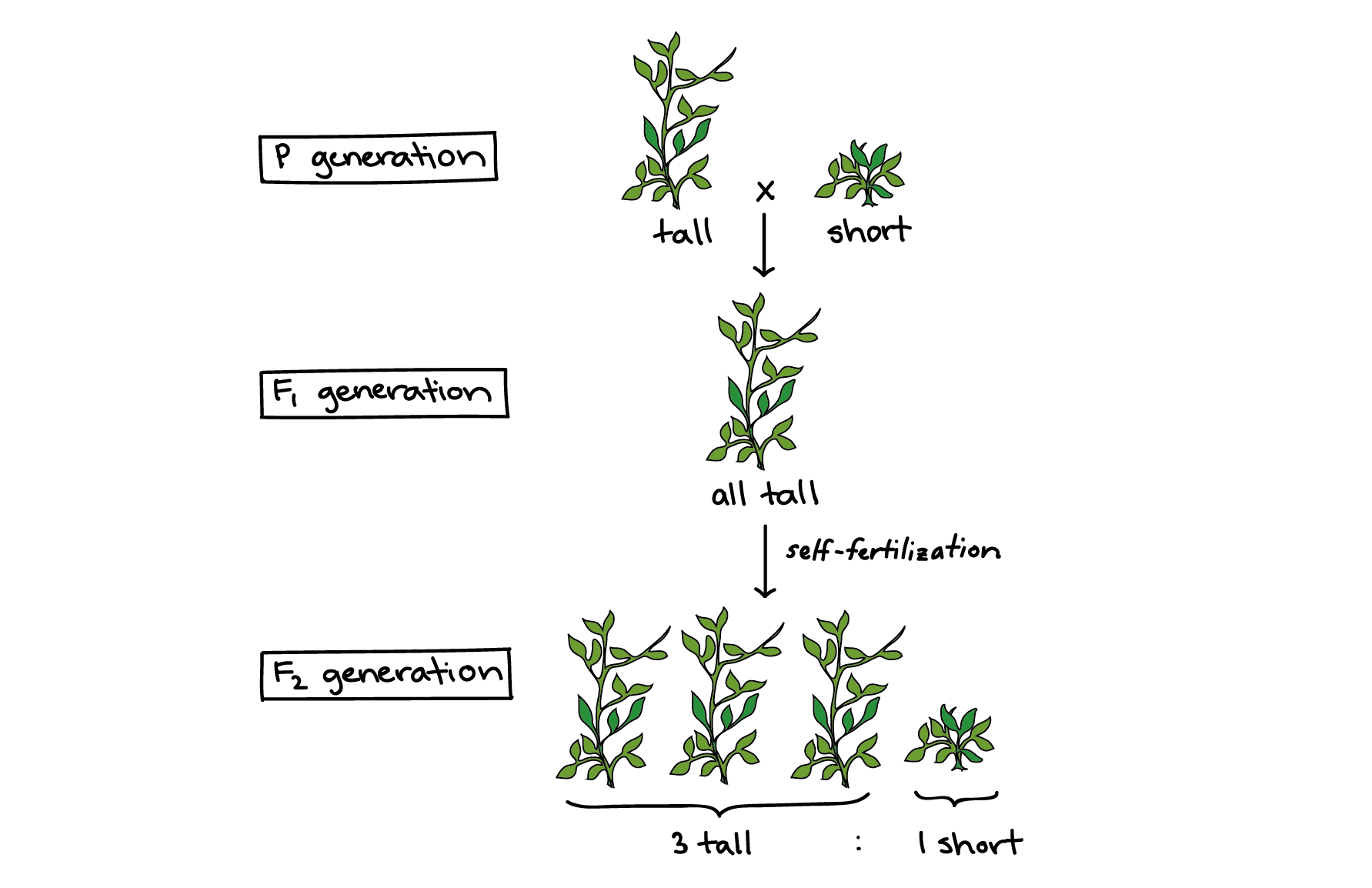Describe Gregor Mendel's Experiment Pea Plants
He performed breeding experiments using pea plants to investigate hereditary traits. Studying traits in peas.

Mendel And His Peas Article Heredity Khan Academy
In 1856 Mendel began a series of experiments at the monastery to find out how traits are passed from generation to generation.
. He combined his knowledge in science and mathematics and observed the. After initial experiments with pea plants Mendel settled on studying seven traits that seemed to be inherited independently of other traits. Mendel studied seven different traits of pea plants.
He used pea plants for 2 main factors. Figure 82 Johann Gregor Mendel set the framework for the study of genetics. The color of the flowers did not blend together.
In 1856 Mendel began his experiments on plant hybridisation with garden peas in the monastery garden. Mendel crossed plants with each of the seven contrasting characteristics and then studied their offspring. From earliest time people noticed the resemblance between parents and offspring among animals and plants as well as in human families.
Pea plants make a convenient system for studies of inheritance and they are still studied by some geneticists today. Although similar work had already been done by contemporary botanists the significant features of all these experiments had been overlooked because the investigators made overall observations of all inherited characters instead of collecting and analysing data in a. See answer 1 Best Answer.
Since pea plants self. He studied the inheritance of seven different morphologically traits on pea plants. Mendels work was not widely recognized until after his death in 1884.
1851 Gregor Mendel referred to as the father of genetics. Students will be able to. Mendel experimented on a pea plant and considered 7 main contrasting traits in the plants.
A brief explanation of the two experiments is given below. There is considerable genetic variation in garden peas. Firstly he ensured that each type bred true eg.
In biology classes we learn that Gregor Mendels experiments breeding pea plants in the mid-19th century taught us that inherited traits are. Mendel wanted to investigate the inheritance of traits. In this experiment Mendel took two pea plants of opposite traits one short and one tall and crossed them.
Working with garden pea plants Mendel found that crosses between parents that differed for one trait produced F 1 offspring that all expressed one parents traits. Mendel conducted hybridization experiments on garden pea. As a young adult he joined the Augustinian Abbey of St.
Mendels experiment on inheritance with garden pea-plants. He was an Austrian biologist scientist and is popular for his garden pea experiment and his laws of inheritance. Gregor Johann Mendel turned the study of heredity into a science.
Mendel chose pea plants as his specimen to study as they exhibit distinctive traits that could be easily observed from one generation to the next eg. Gregor Mendel describes his experiments with peas showing that heredity is transmitted in discrete units. By Lakshmi Jay Published February 2 2021.
Johann Gregor Mendel 18221884 was a lifelong learner teacher scientist and man of faith. The offspring of crosses between parents with different traits are called hybrids. Mendel was a monk in the Augustinian.
Seed shape flower color seed coat tint pod shape unripe pod color flower location and plant height. Mendel published his findings in 1866 but his discoveries were ignored till 1900 when a number of researchers independently rediscovered Mendels work and grasped its significance. During a seven year period Mendel experimented with pea plants in the garden owned in his monastery.
Gregor Mendel is considered as the Father of Genetics. He chose peas because they had been used for similar studies are easy to grow and. In 1865 Mendel presented the results of his experiments with nearly.
When Mendel studied the color of the flowers on the pea plants purple or white he saw the same effect. Genes are composed of DNA. Mendel studied how traits are passed along to offspring.
Recessive genes occur more frequently in the F1 generation than do dominant ones. Supported by the monastery he taught physics botany and. He first focused on seed shape which was either angular or round.
Mendel also worked with bees to determine genetic traits in animals. Gregor Mendel is regarded as the Father of modern genetics. Mendel carried out his key experiments using the garden pea Pisum sativum as a model system.
When the F 1 plants in Mendels experiment were. Each of these seven traits had two contrasting characteristics such as green seed color or yellow seed color. - Easy to grow and produce a large amount of offspring.
At the time it was thought that parents traits were blended together in their progeny. The traits that were visible in the F 1 generation are referred to as dominant and traits that disappear in the F 1 generation are described as recessive. Once he had these purebred seeds he mated the two opposing traits for each characteristic.
In 1856 he began a decade-long research pursuit involving inheritance patterns in honeybees and plants ultimately settling on pea plants as his primary model system a system with convenient characteristics that is used to study a specific biological phenomenon to gain understanding to be applied to other systems. Mendel is known for pea-plant experiments and subsequent theories on genetics. Mendel studied numerous other pea plant traits such as seed shape seed color flower color pod shape pod color and the position of the pods.
What was the most significant conclusion that Gregor Mendel drew from his experiments with pea plants. In 1865 Mendel presented the results of his experiments with. Modern genetics begins with the work of Gregor Mendel an Austrian monk whose breeding experiments with garden peas led him to formulate the basic laws of heredity.
Thomas in Brno in what is now the Czech Republic. Useful features of peas include their rapid life cycle and the production of lots and lots of seeds. Mendel studied inheritance in peas Pisum sativum.
In 1856 he began a decade-long research pursuit involving inheritance patterns in honeybees and plants ultimately settling on pea plants as his primary model system a system with convenient characteristics that is used to study a specific biological phenomenon to gain understanding to be applied to other systems. - Self pollinateMendel could also cross pollinate. Traits are inherited in discrete units genes and are not the results of.
Then he conducted both the experiments to determine the aforementioned inheritance laws. Only tall plants yield tall plants. Describe how Mendel used cross- and self-pollination to produce first generation and second generation pea plants explain that Mendel chose pea plants for his experiments because they were easily grown could be cross- self- and artificially pollinated and had obviously contrasting traits.

Question Video Describing Mendel S Reasons For Using Pea Plants In His Inheritance Experiments Nagwa

Mendel And His Peas Article Heredity Khan Academy

Mendel And His Peas Article Heredity Khan Academy
8 1 Mendel S Experiments Concepts Of Biology 1st Canadian Edition

Comments
Post a Comment